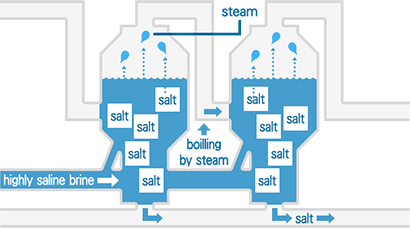
Boiling-down process
Earthenware vessel and salt kettle
To boil down salt concentrate, earthenware vessels were used from ancient times; salt kettles came into general use from the Middle Ages.
Types of salt kettles
Shell kettle (clay salt-pan) (Kaigama)
Shell kettles were made from lime clay produced by kneading powdered shells with brine.
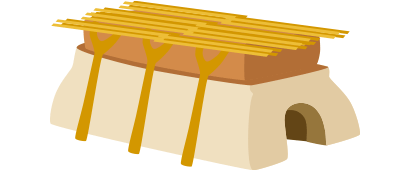
Bamboo kettle (Ajirogama)
Bamboo kettles were constructed in the form of a bamboo basket lined on both sides with clay composed of lime and sand.
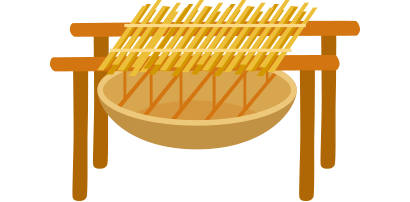
Stone-lined kettle (Ishigama)
Stone-lined kettles were developed from earthenware vessels. The bottom was lined with stones and the gaps between the stones were filled in with mortar.
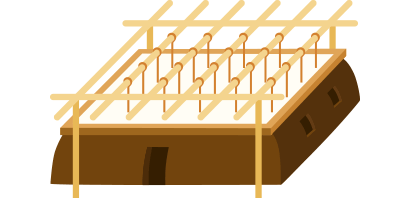
Open iron salt-kettle (Tetsugama,Hiragama)
Open iron salt-kettles were derivatives of Western models. They rapidly came into widespread use because they were more productive than the stone-lined kettles which had been used until then. Open iron salt-kettles were utilized at most of the salt terraces along the coast of the Setonaikai Sea by the beginning of the 1920s.
<Process>
The open iron salt-kettle system consisted of a rectangular salt crystal kettle (3m x 4m) and a small preliminary warming kettle. Steam was released into the air.
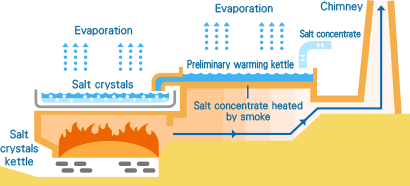
Salt kettle with steam heating
A salt kettle with a steam heating system was developed in 1922, based on sealed salt-kettles in use in Europe. From around this time producers started to perform the boiling down work in collaboration with each other and industrial cooperatives started to operate salt-kettles.
<Process>
Steam generated inside the sealed salt crystal kettle was used as the heat source for the preliminary warming kettle.
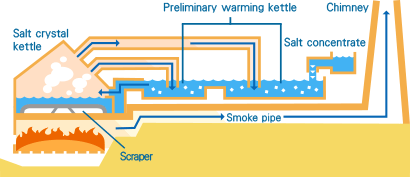
Vacuum evaporation
The first plant with a vacuum evaporation system was completed in 1931. Construction of plants with the present type of system began around the mid 1950s. The manual work required to boil kettles was replaced by inspection work such as monitoring and operating devices.
<Process>
The vacuum evaporation system is based on the principle that lowering the air pressure lowers the boiling point. The air pressure inside the evaporation system was lowered and steam generated from each of the evaporation sections was used as the heat source for the next evaporation section (for three or four sections). [Fuel consumption dropped to less than half of that required for open iron salt-kettles.]
